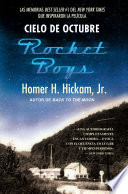

The narrative begins with the young protagonist, Homer Hickam, who dreams of building rockets despite the societal and familial expectations placed upon him. This idea emphasizes the importance of having dreams and aspirations, no matter how distant they may seem. Homer’s passion for rocketry serves as a catalyst for change in his life and the lives of those around him. It illustrates how dreams can inspire individuals to pursue their passions relentlessly, overcoming obstacles and societal norms. The book encourages readers to identify their own dreams and to pursue them with vigor, suggesting that aspirations can lead to personal and communal growth.
Continue readingEducation plays a pivotal role in Homer’s journey. He learns not just from formal education but also from mentors like his teacher, Miss Riley, who encourages him to pursue science and engineering. This idea underscores the significance of mentorship in personal development. Mentors provide guidance, knowledge, and encouragement, helping individuals navigate their paths more effectively. The book advocates for the value of education in fostering creativity and innovation, suggesting that a supportive educational environment can unlock potential and lead to significant achievements.
Continue readingHomer does not embark on his rocket-building journey alone; he collaborates with his friends, who share his passion. This idea highlights the importance of community and teamwork in achieving common goals. The book illustrates how collaboration can lead to greater creativity and problem-solving capabilities. It suggests that working together can help individuals overcome challenges that might be insurmountable alone. The friendships and partnerships formed throughout the story serve as a reminder of the power of community in driving innovation and success.
Continue readingThe story is rife with challenges, from familial struggles to societal ridicule. Homer and his friends face numerous obstacles, including skepticism from adults and financial limitations. This idea emphasizes resilience and the ability to overcome adversity. The narrative demonstrates that setbacks are a natural part of any journey and that perseverance is key to achieving one’s goals. It encourages readers to embrace challenges as opportunities for growth, reinforcing the notion that resilience is a crucial trait for success.
Continue readingHomer’s relationship with his father, who expects him to follow in his footsteps in the coal mining industry, adds a layer of complexity to the narrative. This idea explores how family dynamics can influence personal aspirations and career choices. The book delves into the tension between familial expectations and personal desires, illustrating the struggle many face in balancing these aspects of life. It encourages readers to reflect on their own family dynamics and the impact these relationships have on their ambitions and choices.
Continue readingHomer’s journey into rocketry is rooted in scientific inquiry and experimentation. This idea underscores the significance of curiosity and the scientific method in driving innovation. The book promotes the idea that asking questions, conducting experiments, and learning from failures are essential components of scientific discovery. It encourages readers to adopt a mindset of inquiry, suggesting that curiosity can lead to breakthroughs and advancements in various fields.
Continue readingUltimately, the book is a celebration of pursuing one’s passion and finding purpose. Homer’s journey is not just about building rockets; it’s about discovering who he is and what he wants to achieve in life. This idea resonates with readers, encouraging them to reflect on their own passions and the importance of aligning their careers with their interests. The narrative suggests that when individuals pursue their passions, they are more likely to find fulfillment and success.
Continue reading